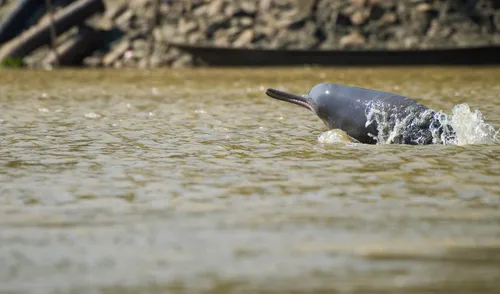Pakistan’s river dolphins, referred to as “bulhan” in the local language, glide along the Indus River, occasionally emerging to take a breath before disappearing again into the dark depths. In 2004, a rare sighting inspired Zulfikar Ali Bhutto, then 14 years old, to take up climate activism. The famed artist, who is currently 33 years old and the grandson of the former Pakistani president, claimed that, up until that point, the only knowledge he had of the mythical dolphins came from elder family members. “They existed in the river, and people were aware of them,” They resembled unicorns to me, he said to Al Jazeera. The dolphins, whose population had drastically decreased since the turn of the 20th century
What are the Indus River dolphins?
Unlike unicorns, the Indus River dolphins are very real. They are, however, at risk of extinction, and despite more of their number being identified in recent years, they remain on the International Union for Conservation of Nature’s Red List of endangered species.
Part of the cetacean family, a group of mammals that also includes whales and porpoises, these dolphins have distinct, elongated noses like blunt swords, which they use to find food along the bottom of the river. They have minuscule eyes—”as”big as pinpricks”—to protect them from river silt that builds up in their freshwater habitats”, Bhutto explained. In fact, the dolphins are functionally blind—unable to see objects but able to detect shifts in light.








